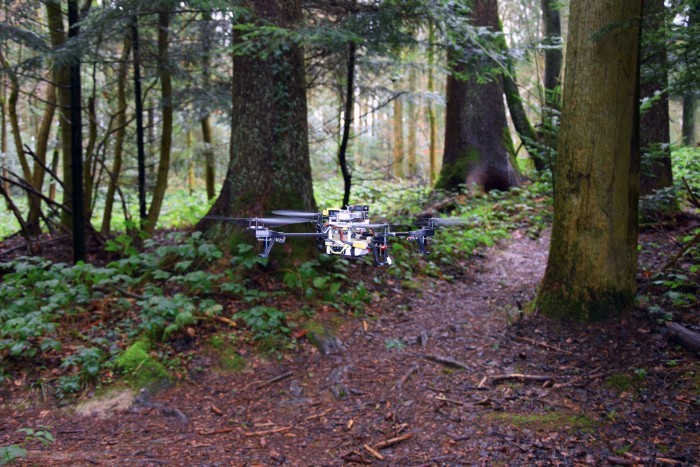Drones have learned to look for people in the forest

As you know, in the deep forest is easy to get lost. If there is no mobile connection or the phone battery is dead, then an inexperienced traveler can get lost and die from dehydration. Fortunately, this will happen less often in the future: scientists from the University of Zurich with colleagues from the University of Italian Switzerland and the University of Applied Sciences and Arts of Southern Switzerland have developed software based on a deep neural network . With it, drone robots will independently find people.
NF lovers are also pleased, because the chase of a robot after a man who hides in the forest is played up in many works. And now this is not fiction.
The key technology here is the recognition of forest paths. Scientists were able to train a neural network to such a level that it recognizes the direction of the path in 85% of cases, that is, even better than a human (82%). For learning neural networks, scientists took 20,000 photos of forest trails, wandering for a few hours through alpine forests with cameras on their helmets.
')
“While unmanned vehicles at high altitude are already used in practice, drones cannot yet autonomously fly in such complex environments as dense forest. In such an environment, any small mistake leads to an accident, and the robot needs a powerful brain to recognize the complex world around it, ”says Professor David Scaramuzza of the University of Zurich.
The developed program works directly on the drone, analyzing the video from two cameras on board.
The robot will follow the path until it finds a person or until it reaches the point of no return on the battery life (3-4 km in one direction should be enough). It is quite easy to hide from it at this stage of technology development, but program developers consider rescue operations as the main one when a person doesn’t hide, but, on the contrary, wants to be found. Every year, thousands of people are lost in forests and mountains: in Switzerland alone, about 1,000 calls from stray or injured tourists come to rescue services every year. Drones can greatly facilitate the work of rescue teams, if the coordinates of a lost person are unknown. They will reduce the search time.
Prior to the practical use of drones is far away. Professor Saramutstsa says that a number of technical problems should be solved. Moreover, according to him, having learned to recognize trails, now we must learn to recognize people.
Scientific work published in the journal IEEE Robotics and Automation Letters ( pdf ).
Source: https://habr.com/ru/post/367931/
All Articles